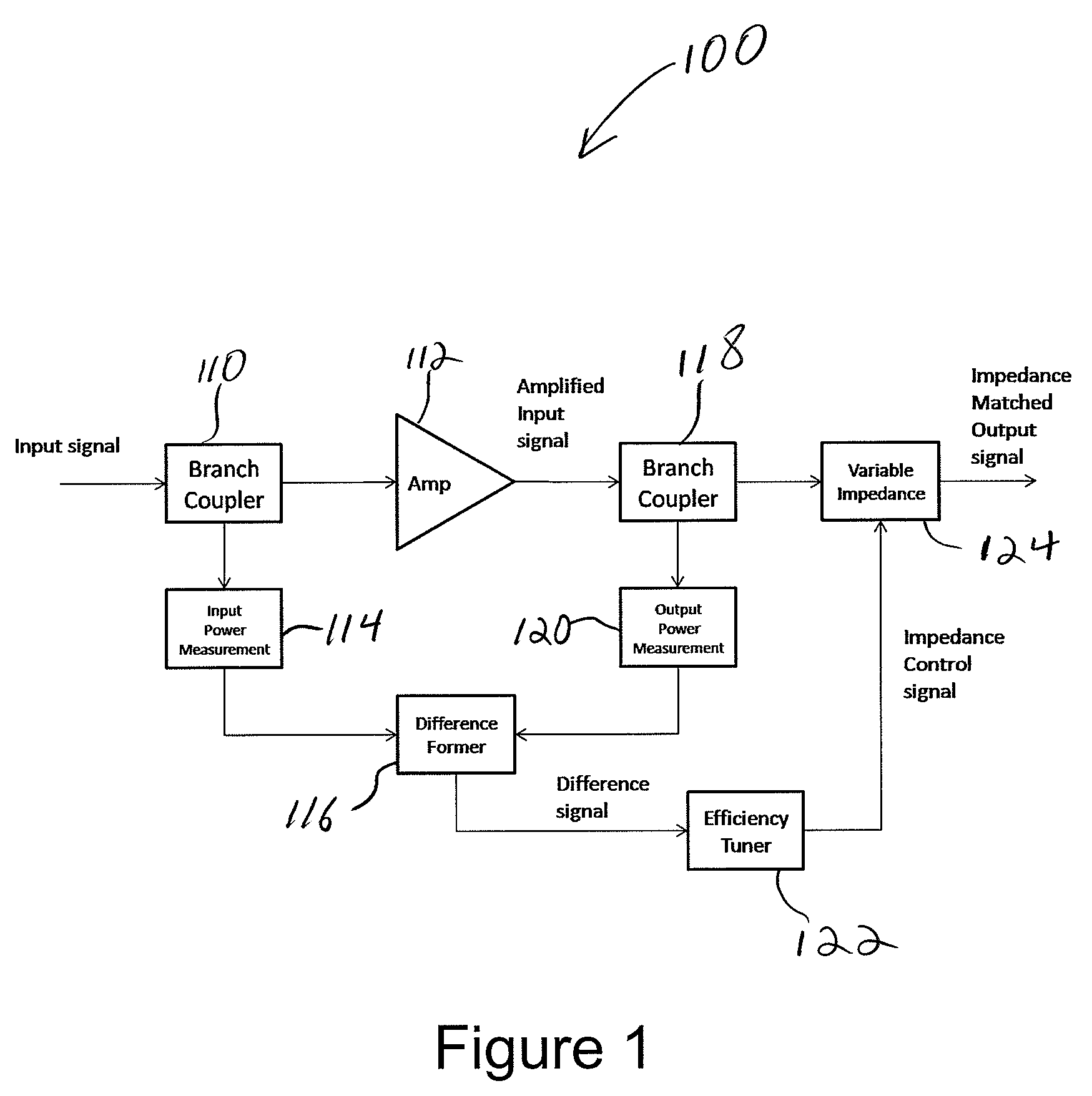Apparatus and method for power added efficiency optimization of high amplification applications
a technology of efficiency optimization and amplifier, applied in the direction of rf amplifier, amplifier with semiconductor devices/discharge tubes, gain control, etc., can solve the problems of direct transfer of heat to heat, heat generation in amplifiers, waste, etc., to improve high-power amplifier applications, reduce thermal run away, and improve the effect of high-amplification conditions
- Summary
- Abstract
- Description
- Claims
- Application Information
AI Technical Summary
Benefits of technology
Problems solved by technology
Method used
Image
Examples
Embodiment Construction
[0026]Reference now will be made in detail to the presently preferred embodiments of the invention. Such embodiments are provided by way of explanation of the invention, which is not intended to be limited thereto. In fact, those of ordinary skill in the art may appreciate upon reading the present specification and viewing the present drawings that various modifications and variations can be made.
[0027]For example, features illustrated or described as part of one embodiment can be used on other embodiments to yield a still further embodiment. Additionally, certain features may be interchanged with similar devices or features not mentioned yet which perform the same or similar functions. It is therefore intended that such modifications and variations are included within the totality of the present invention.
[0028]Referring to the drawings, and initially to FIG. 1, a power added efficiency apparatus 100 for improving transfer efficiency is illustrated. As shown in FIG. 1, an input sig...
PUM
 Login to View More
Login to View More Abstract
Description
Claims
Application Information
 Login to View More
Login to View More - R&D
- Intellectual Property
- Life Sciences
- Materials
- Tech Scout
- Unparalleled Data Quality
- Higher Quality Content
- 60% Fewer Hallucinations
Browse by: Latest US Patents, China's latest patents, Technical Efficacy Thesaurus, Application Domain, Technology Topic, Popular Technical Reports.
© 2025 PatSnap. All rights reserved.Legal|Privacy policy|Modern Slavery Act Transparency Statement|Sitemap|About US| Contact US: help@patsnap.com



